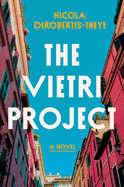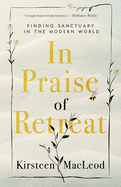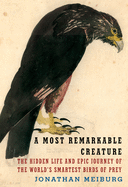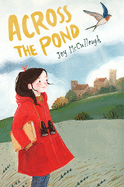
| Publisher: | Harper | |
| Genre: | Women, Family Life, General, Coming of Age, Fiction | |
| ISBN: | 9780063017702 | |
| Pub Date: | March 2021 | |
| Price: | $24.99 |
| Starred | Fiction |
by Nicola Derobertis-Theye
A journey to find a mysterious book collector takes a bookseller to Rome in Nicola DeRobertis-Theye's The Vietri Project, an intimate portrait of one woman's attempt to outrun fear and find purpose in her life.
Gabriele knows there's only a 10% chance of inheriting her mother's schizophrenia, but her continued fear "prevented me from feeling that my life was real, that it belonged to me." Uprooting her quiet life to travel the world, she finds herself drawn to Rome, the birthplace of her mother and home to Giordano Vietri, an eccentric book collector who ordered thousands of esoteric titles from Gabriele's former employer. Her spontaneous attempt to find Vietri quickly becomes a committed pursuit as her paltry findings send her down an ever-deepening rabbit hole through military records, World War II memoirs, modern Italian history and her own relationship with Rome and her family.
The Vietri Project is an absorbing, character-driven novel steeped in astute personal and historical insight. DeRobertis-Theye's debut skillfully demonstrates how the intricate root system of history both creates and lives within the present-day world, coexisting even as perception of the past shifts over time. Gabriele's pursuit of Vietry--an unconscious attempt to find purpose in the narrative of her own life--brings with it perceptive reflections on her complicated family, Italian culture and her fear of the unknowable future. A raw portrait of an independent woman unmoored in her own life, paired with prescient observations of Italian culture and history, make this book a rich and rewarding experience. --Jennifer Oleinik, freelance writer and editor

| Publisher: | Kensington | |
| Genre: | Women, General, Own Voices, African American & Black, Fiction, Historical | |
| ISBN: | 9781496730084 | |
| Pub Date: | March 2021 | |
| Price: | $15.95 |
| Fiction |
by Denny S. Bryce
Denny S. Bryce's debut, Wild Women and the Blues, is an immersive and suspenseful dual-timeline historical novel set in Jazz Age and present-day Chicago. In 2015, film student Sawyer is looking for answers about a film he discovered in his grandmother's attic, and he's convinced 110-year-old Honoree has them. In alternating point-of-view chapters, Sawyer is forced to divulge his own painful secrets in exchange for Honoree's while she tells him the story of her time as a dancer in 1925--a time of prohibition, jazz and the New Negro Movement.
Determined to rise above her circumstances, young Honoree auditions at a higher caliber nightclub, only to witness a murder there just hours later. Complicating matters is the fact that the former love of her life has just reappeared after years away--and he's involved in shady dealings. Honoree's tale is one of murder, intrigue and a dizzyingly vibrant nightlife that will captivate readers as much as it does Sawyer. It's perfect for fans of The Seven Husbands of Evelyn Hugo.
Bryce uses slang and just the right number of historical references to ground Honoree's chapters in time and place, but she also draws out Sawyer's grief and guilt with moments touched by the ghost of his sister. As elderly Honoree and young Sawyer share their stories, they find that they have more in common than either one expected. Bryce excels at both action and emotion, and readers will be caught up in the passion and peril of 1925 Chicago. --Suzanne Krohn, editor, Love in Panels

| Publisher: | Drawn & Quarterly | |
| Genre: | General, Literary, Comics & Graphic Novels, Manga | |
| ISBN: | 9781770464360 | |
| Pub Date: | March 2021 | |
| Price: | $24.95 |
| Starred | Graphic Books |
by Shigeru Mizuki, trans. by Zack Davisson
The late Shigeru Mizuki's most recent posthumous import, Tono Monogatari--in English, Tales of Tono--is as multi-layered as the eminent manga creator himself. Venerated for his magnificently detailed histories--Onward Towards Our Noble Deaths, for example--and cherished for his charming supernatural collections, including the Kitarō series, Mizuki here combines both history and yōkai (demons and ghouls) for delightfully edifying and entertaining results. Translator Zack Davisson also provides crucial contextual background, highlighting provenance, historical gravity and cultural/literary relevance.
The original Tono Monogatari, published in 1910, was a partner effort by bureaucrat Kunio Yanagita and storyteller Kizen Sasaki to gather--and preserve--the disappearing myths and legends of Japan's Tono region. Mizuki's captivating graphic adaptation was serialized in 2008 and 2009, then compiled and published in 2010. Mizuki's opening page features a full-color, highly detailed torii (traditional gated entry) scene, with a caricature of himself pondering what his next steps might be. His oversized visage expands beyond the panel, as if definitively announcing his presence. His recurring insertion as guide/interpreter/commentator throughout remains a delightful addition as he reveals 119 Tono tales--some full narratives, some interlinked, some mere fragments--prefaced by encircled numbers.
Wary villagers and mountain demons clash, gods appear while humans disappear, the dead aren't dead, betrayals are plenty, dubious rewards happen as often as fatal punishments. Spirits possess and destroy, and neither children nor elders can avoid tenacious monsters. At the collection's end, Mizuki's surprise encounter with Yanagita proves especially engrossing. Sublime, hair-raising, occasionally laugh-out-loud ludicrous, Mizuki continues to charm--and haunt. --Terry Hong, Smithsonian BookDragon

| Publisher: | Harper | |
| Genre: | Biography & Autobiography, Women, History & Criticism, Television, United States, 20th Century, History, Performing Arts | |
| ISBN: | 9780062973306 | |
| Pub Date: | March 2021 | |
| Price: | $27.99 |
| Biography & Memoir |
by Jennifer Keishin Armstrong
Will the Academy of Television Arts and Sciences please create an honorary Emmy Award for Jennifer Keishin Armstrong (Seinfeldia) already? She has delivered benchmark histories of several beloved sitcoms. With When Women Invented Television, Armstrong offers a group biography of four TV iconoclasts that doubles as a captivating record of behind-the-scenes goings-on during the medium's infancy.
All of Armstrong's subjects were there in 1949 or 1950, when televisions were becoming fixtures in living rooms across the U.S. Gertrude Berg (1898-1966) was the face of and brains behind one of the first sitcoms: The Goldbergs, which centered on a Jewish family living in a Bronx tenement. Irna Phillips (1901-1973) created TV's first daytime soap opera, These Are My Children. (Phillips was also responsible for introducing the melodramatic organ blast forever associated with the soapiest of soaps.) With The Hazel Scott Show, renowned jazz pianist Scott (1920-1981) became the first Black person to host a prime-time network TV show. And decades before she was a Golden Girl, Betty White (b. 1922) was the cohost and breakout star of daytime TV's Hollywood on Television. Soon afterward came the sitcom Life with Elizabeth, which White created, produced and starred in, putting her in the company of a small group of women that included Berg and Lucille Ball.
The pioneering-women-rescued-from-obscurity literary subgenre is beautifully served by the authoritative and absorbing When Women Invented Television. Like all of Armstrong's books, it goes down like good TV: although it can be consumed without too much effort, its insights are likely to live on in the reader's memory in something not unlike syndication. --Nell Beram, author and freelance writer

| Publisher: | Harper Business | |
| Genre: | Technology & Engineering, Leadership, Social Aspects, Business & Economics, General, Management, Workplace Culture | |
| ISBN: | 9780063068308 | |
| Pub Date: | March 2021 | |
| Price: | $29.99 |
| Business & Economics |
by Tsedal Neeley
Tsedal Neeley (The Language of Global Success), the Naylor Fitzhugh Professor of Business Administration at the Harvard Business School, has been researching and planning a book about remote work teams for 20 years, but a worldwide pandemic has put her theories into practice in unimaginable ways. The result is Remote Work Revolution, a timely, thoughtful and practical guide to moving to effective remote teamwork.
In eight chapters, Neeley discusses how to coalesce a team by setting norms (what's the best way for each person to communicate, best times of day to reach each team member) and building trust; how to discourage "faultlines" ("invisible or hypothetical distinctions that split a group into... an 'us versus them' mentality") and encourage the idea of diversity as strength; and how to lead a team when you cannot physically be in a room together.
Neeley adopts Frances Frei and Anne Morriss's definition of leadership: "empowering other people as a result of your presence--and making sure that impact continues into your absence." Granting employees autonomy increases productivity, and her research bears that out. Neeley argues that the "Agile Manifesto for Software Development" can be scaled to move nimbleness and collaboration from onsite to distance-based work. And she supports her approach to "the deeper work" that allows colleagues to collaborate across cultural and language divides with real-world examples.
Each chapter ends with key takeaways, and her closing "Action Guide" lists questions to use with team members for putting Neeley's principles into practice. --Jennifer M. Brown, senior editor, Shelf Awareness

| Publisher: | Vintage | |
| Genre: | Literary Criticism, General, Popular Culture, 20th Century, Literary Collections, Social Science, Essays, Modern | |
| ISBN: | 9781984898838 | |
| Pub Date: | March 2021 | |
| Price: | $16.95 |
| Essays & Criticism |
by Jenny Minton Quigley, editor
Vladimir Nabokov's Lolita, first published in 1955, has always raised hackles, narrated as it is by an entertainingly erudite, grade-A pedophile. Jenny Minton Quigley--whose father, Walter Minton, published the first American edition of Lolita in 1958--asked 30 writers to reexamine the novel 60-odd years after its initial print run. The result, Lolita in the Afterlife: On Beauty, Risk, and Reckoning with the Most Indelible and Shocking Novel of the Twentieth Century, is an uncommonly incisive look at a book that has grown exponentially more problematic since the #MeToo revolution.
Lolita in the Afterlife largely comprises personal essays, straight-up literary criticism and syntheses thereof. Despite Quigley's contributors' diversity and range of perspectives, a significant number quote the same Lolita passages and make references to the sexual predators Harvey Weinstein and Jeffrey Epstein. A few writers' experiences as victims of sexual abuse can't help but influence their tussles with Nabokov's text.
Many contributors feel conflicted about, as Lauren Groff writes in "Delectatio Morosa," a book that is "both a truly towering work of genius and a profoundly poisonous thing that works in darkness and hurts in stealth." Most contributors resist the blithe spirit with which Nabokov's novel was initially received--as a "love story" or, as Sloane Crosley puts it tongue-in-cheekily in "They Stay the Same Age," "America's perviest road-trip buddy comedy." But if there's one opinion that unites all Lolita in the Afterlife contributors, it's that, while the path to publishing Lolita would be bumpy today, it deserves to be in print. --Nell Beram, author and freelance writer

| Publisher: | ECW Press | |
| Genre: | Self-Help, Personal Growth, Travel, Happiness, Inspiration & Personal Growth, Body, Mind & Spirit, Essays & Travelogues | |
| ISBN: | 9781770414730 | |
| Pub Date: | March 2021 | |
| Price: | $18.95 |
| Body, Mind & Spirit |
by Kirsteen MacLeod
In our hyper-connected, always-on society, the notion of retreat is both appealing and fraught: bosses, families and friends may frown on anyone who deliberately makes themselves inaccessible. Yet stepping back from the swirl of daily life--whether for a walk in the woods or an extended time away at an ashram or monastery--can prove restorative, even transformative. Scottish-Canadian writer Kirsteen MacLeod (The Animal Game) shares her experience with various types of retreat and examines its long history as a practice in her first nonfiction book, In Praise of Retreat.
MacLeod begins with the story of her own cabin in the woods, bought as an escape from city life, and goes on to broaden her view. Her (mostly non-religious) exploration includes ancient traditions such as pilgrimages, monastic life and the choice to become a hermit, as well as two wildly different experiences at yoga ashrams. She also emphasizes the importance of carving out space for solitude amid the bustle of everyday responsibilities. In Praise of Retreat--part memoir, part nature essay, part guidebook--is thoughtful, thoroughly researched (though at times the facts threaten to overwhelm the narrative) and often refreshingly wry. An epilogue (written in June 2020) acknowledges the odd timing of a book on retreat published during a global pandemic that has forced many people into their homes. While MacLeod's advice is certainly arriving at an unusual time, readers may still be able to draw wisdom and inspiration from her experiences and seek refreshment for themselves in solitude, as she has done. --Katie Noah Gibson, blogger at Cakes, Tea and Dreams

| Publisher: | Knopf | |
| Genre: | South America, Nature, Biography & Autobiography, Science, Birds, Americas (North Central South West Indies), Environmentalists & Naturalists, Zoology - Ornithology, History, Life Sciences, Travel, Animals, General, Biological Diversity, Birdwatching Guides | |
| ISBN: | 9781101875704 | |
| Pub Date: | March 2021 | |
| Price: | $30 |
| Science |
by Jonathan Meiburg
If a bird can be said to have inappropriately flown beneath the radar of public fascination, that is the caracara. Jonathan Meiburg's fabulously epic account, A Most Remarkable Creature, sets the record straight. Meiburg is frontman for the band Shearwater (named after a long-distance marine bird); in 1997, he received the Thomas J. Watson Fellowship, which awards a year's travel to remote communities, sparking his enchantment with islands, birds and natural history.
In the falcon family, caracaras are unlike other birds of prey, who focus on hunting. Caracaras, innately curious and "disarmingly conscious," seek out interaction regardless of food. Calling a caracara a bird of prey, says Meiburg, "feels like calling the painters of the Italian Renaissance a group of unusually gifted apes." Caracaras fascinated Darwin, who wrote more about them than any other bird.
Caracaras will "pluck the cap from your head, tug at the zippers of your backpack, and meet your eye with a forthright, impish gaze." This "earnest, playful quality" is what spurred Meiburg's research, yet A Most Remarkable Creature is much more than a scientific profile. It is a grand intellectual adventure involving dinosaurs, DNA, naturalists, exploration and survival. Meiburg is a gifted storyteller, and one can't help but fall under the same spell he did, daydreaming about "keeping a striated caracara in my apartment. It would be the world's most exasperating roommate, but watching it build a nest of shredded T-shirts, LP jackets, and guitar strings in my bookshelf might be worth it." --Lauren O'Brien of Malcolm Avenue Review

| Publisher: | W.W. Norton | |
| Genre: | Women Authors, American, General, Poetry | |
| ISBN: | 9780393540895 | |
| Pub Date: | March 2021 | |
| Price: | $26.95 |
| Poetry |
by Kim Addonizio
In Now We're Getting Somewhere: Poems, the forever irreverent, National Book Award-nominated poet Kim Addonizio (Bukowski in a Sundress; Tell Me) delivers another knockout collection in some three dozen poems. Accolades tower for the prolific Addonizio, recipient of fellowships from the NEA and Guggenheim, and Pushcart Prizes across genres. It's no surprise--in Addonizio's treatment, subjects as various as misogyny, climate change, hotel bars, literary critics, convalescence, orgasms and John Keats become heartbreaking, gut-busting, shattering.
Addonizio shapeshifts. She toggles easily between the humorous and the brutal, sincere and sarcastic, confessional and political--often in the same poems. "Little Old Ladies" devastates with its portrait of aging, stabs of black humor offering cold comfort. "To the Woman Crying Uncontrollably in the Next Stall" bleeds emotion. In "Fixed and in Flux," Addonizio probes the stakes of worldviews: "Nine planets/ seemingly forever and then suddenly/ Pluto's demoted./ The king is dead!/ .../ Meanwhile, a sea worm slithers through a mortgage./ 72% of Americans believe in angels,/ no wonder that parasitic amoeba got elected."
How to cope? In "Résumé," after Dorothy Parker's classic, Addonizio concludes with martini wit: "Friends are distracted;/ Aging stinks;/ You'll soon be subtracted;/ You might as well drink."
But around the corner from depression and dark humor, hope beckons. However far Addonizio lures readers from comfort, she yet suggests perseverance, possibility. In the collection's final poem, "Stay," Addonizio closes: "Please wait for the transmissions, however faint./ Listen: when a stranger steps into the elevator with a bouquet of white/ roses not meant for you,/ they're meant for you." --Katie Weed, freelance writer and reviewer

| Publisher: | Viking | |
| Genre: | American, General, Poetry, African American & Black | |
| ISBN: | 9780593465271 | |
| Pub Date: | March 2021 | |
| Price: | $15.99 |
| Poetry |
by Amanda Gorman
Twenty-two-year-old Amanda Gorman made half the nation shed a tear (or several) at President Joe Biden's inauguration with her reading of her powerful and passionate poem "The Hill We Climb." Not only was Gorman named the first National Youth Poet Laureate at the age of 17, she was also the sixth, and youngest, presidential inaugural poet in U.S. history.
The physical book--a slim hardcover with a cover featuring red and blue text on a yellow background--is a lovely piece of art, clearly designed to match Gorman's January 20, 2021, outfit: a sunny yellow jacket, gold jewelry and a "Fiery Red" satin headband. In her foreword, Oprah Winfrey, who sent the young woman the jewelry, says Gorman is exactly what the nation had been waiting for, a " 'skinny Black girl, descended from slaves,' showing us our true selves, our human heritage, our heart." They don't come often, she writes, "these moments of incandescence where the welter of pain and suffering gives way to hope. Maybe even joy." But that is what Gorman made listeners feel with her stunning poem--the aching, the agony, the will to endure.
The Hill We Climb will certainly be given to many a 2021 graduate. Its beautiful design and small format, with the text of the poem spread out over 30 pages, allows the book to be the kind of keepsake one may turn to when a dose of hope is needed. "Let the globe, if nothing else, say this is true," Gorman wrote, "That even as we grieved, we grew,/ That even as we hurt, we hoped,/ That even as we tired, we tried." --Siân Gaetano, children's and YA editor, Shelf Awareness

| Publisher: | Dial Books | |
| Genre: | Emotions & Feelings, Environment, Science & Nature, Social Themes, Self-Esteem & Self-Reliance, Juvenile Fiction | |
| ISBN: | 9780593112595 | |
| Pub Date: | March 2021 | |
| Price: | $17.99 |
| Starred | Children's & Young Adult |
by Corinna Luyken
Corinna Luyken (My Heart; illustrator of Nothing in Common) uses lyrical language and luminous illustrations to create a splendid picture book in which she likens a child's internal landscape to the parts of a tree, successfully conveying the interconnectedness of humans to nature--and to other human beings, as well.
The first-person narrator describes "the tree in me" as many things: it is delicious flavors ("part apple,/ part orange-pear-almond-plum,/ part yummm!"); it is the coalescence of its components ("seed and blossom, bark and stump,/ branch and trunk/ and crown"); and it can even be defined by its visitors ("bird-squirrel-worm/ and bee"). This tree has "roots that go deep.../ down to where other roots reach up toward their own trunk-branch-crown/ and sky too." The narrator, by virtue of recognizing "the tree in me," is able to "see/ that there is also a tree.../ ...in you!" A variety of races and ethnic backgrounds are represented in the exuberant children who populate this idyllic setting.
Luyken's spare text uses double-page spreads and page turns to great effect, and her art gracefully ties the extended metaphor to the child narrator. Dazzling gouache, pencil and ink illustrations adorn the pages in earth tones and exuberant pinks, yellows and blues, and prominent textures add movement and complexity to the inviting art. The Tree in Me is a gem of a picture book that shares the inspiration Luyken finds in "love, nature, and the web of relationship that connects us all." --Lynn Becker, blogger and host of Book Talk, a monthly online discussion of children's books for SCBWI

| Publisher: | Levine Querido | |
| Genre: | People & Places, Caribbean & Latin America, Young Adult Fiction, Diversity & Multicultural | |
| ISBN: | 9781646140442 | |
| Pub Date: | March 2021 | |
| Price: | $17.99 |
| Children's & Young Adult |
by Francisco Montaña Ibáñez, trans. by David Bowles
In The Immortal Boy, Colombian author Francisco Montaña Ibáñez constructs a harshly authentic story of poverty tempered by sibling love and new friendship. Poet David Bowles (They Call Me Güero) contributes a smooth translation in this first of Ibáñez's books to be published in English in the U.S..
This haunting novel uses alternating chapters, told by a third-person narrator and a first-person narrator, to present two stories recounted in both languages using a double-sided binding. Five motherless children live alone in Bogotá, Colombia. Their father has gone to find work, leaving 13-year-old Hector and 12-year-old Maria in charge of their younger siblings. When their neighbor stops paying them rent and Hector loses his job, Hector falls in with a gang leader who gives him both money and a gun. Hector does his utmost to keep the siblings together while Maria attempts to quell their hunger with meager meals, but David, the next-to-youngest sibling, is always hungry. The second narrative takes place in an orphanage, a short time after Hector commits an unforgivable act; David is known in the orphanage as the Immortal Boy because he has convinced the other children he is immune to bullets. His only friend, Nina, is the first-person narrator, a new girl whose parents are both political prisoners. She hopes that, when her mother is freed, she will adopt David.
The orphanage is an old plantation, bucolic in contrast to the family's urban home. Nina and David's friendship offers welcome relief from the heartbreaking story of the siblings, but it is the strength of the two interwoven narratives that provides a special, albeit very sad, reading experience for mature young people. --Melinda Greenblatt, freelance book reviewer

| Publisher: | Atheneum Books for Young Readers | |
| Genre: | Friendship, Animals, People & Places, Europe, Birds, Social Themes, Juvenile Fiction | |
| ISBN: | 9781534471214 | |
| Pub Date: | March 2021 | |
| Price: | $17.99 |
| Children's & Young Adult |
by Joy McCullough
A Scottish castle, birdwatching and finding one's flock are at the center of the charming middle-grade novel Across the Pond by Joy McCullough (Blood Water Paint; A Field Guide to Getting Lost).
When Callie's parents inherit a Scottish castle, she's thrilled at the prospect of a fresh start. But Callie's hopes of reinvention are shattered after uncomfortable run-ins with the kids of South Kingsferry, including the castle gardener's cantankerous granddaughter, Sid. "She might live in a castle," but she's "still just awkward Callie." She reluctantly joins the local twitching (birdwatching) club when her parents tell her she is allowed to homeschool only if she participates in a social activity. But the club has misogynistic birding rules and Callie determines to beat them in the upcoming birdwatching competition. Callie finds an unexpected birding companion in quiet Sid and, when they discover the World War II journals and birding pamphlets of the castle's previous owner, a tentative friendship begins to bloom. When a medical crisis affects someone close to Callie, it brings the community together and she learns "it's not the place so much as the others flying with me that tell me I'm home."
In Across the Pond, her second middle-grade novel, McCullough has created a realistic and compelling story about belonging. Even readers unfamiliar with birdwatching will enjoy learning about the history of the sport and the subtle differences that separate species. McCullough's artful comparisons between the characteristics of birds and humans provide a growing sense of self-awareness for Callie and Sid--they come to find that caring for and keeping track of family and friends is much like being among a flock of birds. --Jennifer Oleinik, freelance writer and editor